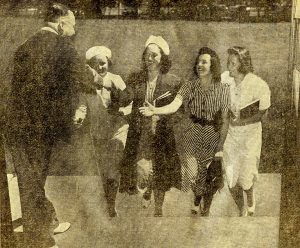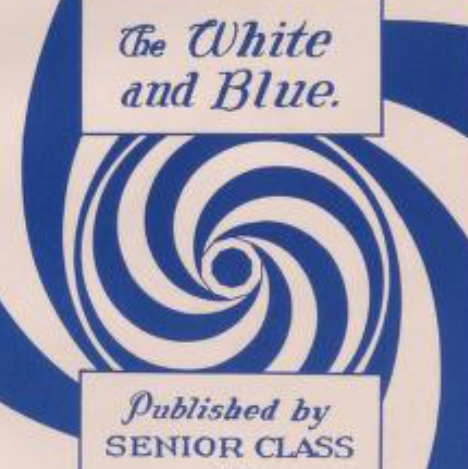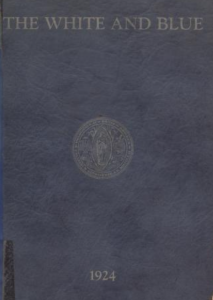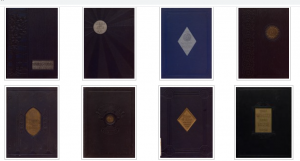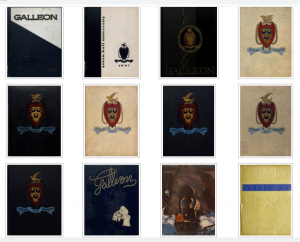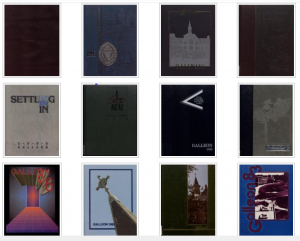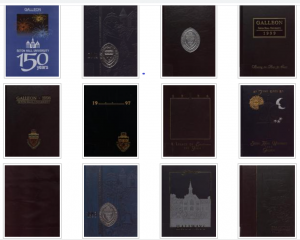“Touchdown for Old Setonia!” was an exclamation that was cheered on by players, cheerleaders, supporters in the grandstands, and all who followed the fortunes of Seton Hall College football throughout its earliest days in action. Joining both Baseball and Basketball as a signature sport during the earliest years of intercollegiate competition at Seton Hall, Football was also included as one of the most prolific and successful athletic teams on campus.
American Football celebrated its Sesquicentennial last year with the game being created in New Jersey in 1869, and as colleges and universities discovered the sport they introduced it to their respective student bodies in turn. This ultimately led to wide-spread popularity of this game which quickly became synonymous with Fall Saturdays and captured the imagination of the overall sporting public. This is especially true during the nineteenth century when Football was developing itself as a unique and unifying force around the country. The attractiveness of this sport especially among the immigrant sons and first generation of college students at Setonia at first and as it became the “American Game” (as a parallel to Baseball as the “American Past-Time) built in popularity over the century plus.
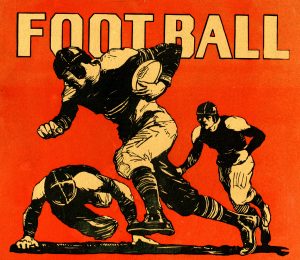
Seton Hall can share in a chapter of College Football history through the posting of several memorable seasons, players, coaches, and milestones that make this story a memorable on in various ways beyond the “gridiron” alone. In retrospect, the days of Seton Hall Football is a case of fond memories, regular inquires about the research aspects of the sport, and many wistful questions about if it will return as a sport on campus at some point in the future? Time and circumstances will tell if we can kick-off once again, but for now let us reflect on a sport that at one time gripped the imagination of the campus and its fandom.
Seton Hall campus back in the day when the school fielded a competitive football eleven at various junctures from the late nineteenth century through the early 1980s. An auspicious moment came when looking at the “kickoff” of the sport at the college, it is recognized by various scholars that Seton Hall played in the very first football contest between two Catholic institutions of higher education when they matched up against St. John’s (later known as Fordham and not to be confused with St. John’s of Queens) during the Autumn of 1882. Although this seminal moment resulted in a loss, the following December when the Setonia Eleven posted their first victory as a program over St. John’s by a score of 2-0 (This was measured in “goals” as different scoring rules were in vogue during the nineteenth century and would later change as the game expanded and modernized over time) which helped to solidify the sport and show it had the potential to succeed.
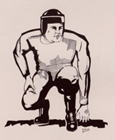
Between 1885 and 1886, Seton Hall posted undefeated campaigns, had a five game winning streak, and were unscored upon and handily defeated St. John’s in particular by scores of 14-0, 36-0, 12-0, 32-0, and 63-0 before dropping the sport in 1887. The squad resumed play the following season with a new nickname – “The Alerts” (with a Junior Varsity or Freshman team nicknamed – “The Senators” or “Crescents” at various times over the next few years) and boasted a 2-1 record after playing St. John’s three more times before diversifying their scheduling by the end of the 1880s.
By 1889, The Alerts played a more diverse set of opponents when they matched up against a number of independent Northern New Jersey-New York City metropolitan based club teams in particular including the Oritani Field Club and Bedford FC, defeating them both 28-0 and 18-4 respectively that year. Additional athletic organizations and high school contingents were played during the 1890s including such entities as the Newark AC, Palma Club of Jersey City, Varuna Boat Club, Brooklyn Poly, Hoboken HS, Iron Cross of Jersey City, Willet’s Point Engineers Corp , Motor Team of Brooklyn, Crescents of Harlem, and the Morristown Field Club, etc. Conversely, Seton Hall also started to play other collegiate squads aside from St. John’s alone including Hackettstown Institute (later known as Centenary College), St. Francis Xavier, Trenton State Normal School, St. John’s (Queens), College of New Jersey (later known as Princeton) Frosh, City College of New York (CCNY) Juniors, St. Peter’s College (Jersey City), and Manhattan College among others who had campuses around the region.
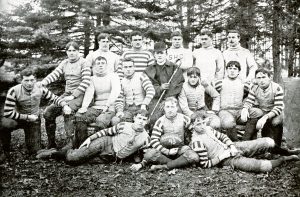
In terms of coach guidance, Seton Hall relied on James P. Lee (Harvard, ’90) who was an All-American selection for the Crimson in 1889 and enrolled at the Columbia Law school earning his LL.B. degree while simultaneously employed by Seton Hall during the 1890s. Counted among the standout players during this era included such “gridders” as Gene Kinkead, John Phelan, Jim Smith, Tom Reilly, Tom Walsh, Richard Kane, Gene McDonald and the first of many members of the McDonough family who donned the White and Blue sweaters of Setonia. Under the guidance of Coach Lee and company, winning seasons were attained in 1892, 1893 (undefeated), 1894, 1895, 1896, 1897, 1898, 1899 were earned and Setonia amassed a combined record between 1883 and 1899 of 63-13- 5 (with various cancelations and forfeits) to end the century on a high note.
Moving into the early twentieth century, more action was in play at different levels for the Setonia Football teams and fans as an Alumni squad was formed to compliment the Varsity and “Frosh” contingents and a more structured scheduling trend emerged as more collegiate elevens and fewer club or prep school teams were played, but not entirely eliminated from the opponent list altogether. Counted among those squads Seton Hall played included such squads as the Seton Hall Alumni, Nassau Club of Princeton, Knickerbocker AC, 5th U.S. Artillery, Dreadnaught AC, Willet’s Point Engineers Corp, Robert Davis Association at St. George Cricket Ground, Hoboken. Fort Hancock (Sandy Hook), Eaton Business College, New Jersey State School, Columbia College of Physicians and Surgeons, New York , University & Bellevue Medical College, and others.
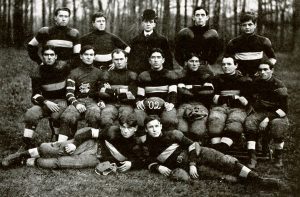
In 1900, Seton Hall posted a 7-3 record and improved to 9-2 a year later. Perfection came in 1903 when The Alerts went 8-0 and the point total for the year was an amazing 174-2. A majority of home games were scheduled for the first time and through this memorable season Seton Hall defeated such opponents as Philadelphia Dental College, Manhattan College, Villanova, Columbia Law, and Pratt Institute. By 1904, Seton Hall had another winning campaign at 7-2 when they defeated a number of higher profile institutions including the University of Maryland (17-0), Fordham (6-0), and Delaware (26-0). In 1905, The Alerts defeated St. Francis-Brooklyn (71-0) and Rutgers (22-10) which served as a high water mark to cap the first decade of the twentieth century.
Beyond the “Golden Age” of Seton Hall Football, the presence of records become somewhat sketchy as there is no existing log of results from 1906-1912. The last pre-Great War documentation shows that Setonia went 5-1 in 1913 and defeated among others the Fordham “B” team, St. Francis-Brooklyn, and St. Peter’s College by a differential of 212 points for Setonia to 27 for their opponents. By this time, Jack Fish (who later coached Baseball and at Seton Hall Prep) scored 48 points and James “Honey” Dugan 47 of his own which contributed to this successful season and marked the last major success during the “Golden Age” as the college dropped football for the duration of World War I and the administration would not sponsor the sport again until the Fall of 1922 when they registered a 3-2 record.
During the 1920s, football at Setonia was short-lived, but highlights included the renewed emergence of Junior Varsity Football with more prominence among the star players during this period included John J. Dougherty (later an Auxiliary Bishop and President of Seton Hall from 1959-69) who was a guard on the 1926 team which went 5-2-1 and Bud Conlan a starting center and team captain for three years. This era included a mix of highs and lows as they played such schools as Trenton Normal (later Trenton State and presently the College of New Jersey), Upsala, Pennington School, University of Pennsylvania Frosh, Cooper Union, Temple, Albright, CCNY JV and Villanova Frosh among others as Football at Seton Hall was doomed to pause again after 1928.

A serious move was made to create a successful tradition with the hire of Richard Paul “Red” Smith (1904-1978) an alumnus of the University of Notre Dame and protégé of legendary coach Knute Rockne. After playing for the Irish, Smith also played professional football with the Green Bay Packers, New York Giants, and New York Yankees in the National Football League (NFL) and baseball with the New York Giants of the National League (NL) prior to serving as Head Coach of the Seton Hall eleven during the early 1930s before going back to the professional leagues as an assistant coach for the Packers and Giants in the NFL and also the Chicago Cubs of the NL.
The last appearance of the team during the Great Depression era came from 1930-33 with little success although they did not have any winning records, they did post singular wins over Moravian, Brooklyn College, East Stroudsburg State, Canisius, and others. Nearby Upsala of East Orange was a natural rival and in 1931 they played a benefit game to help aid the destitute during this time in what was billed as the “Championship of the Oranges” in a memorable community encounter. Setonia also played its first documented night game (a rare occurrence during the 1930s) against Davis & Elkins of West Virginia held in Municipal Auditorium, Atlantic City before a crowd of 5,000. Otherwise, Seton Hall played a spotty schedule during the 1940-47 seasons including a gap during World War II, but an undefeated 2-0 campaign where they defeated the 1941 – 2-0 Scranton Frosh and the Marianopolis Club.

Many Catholic colleges disbanded their long standing football teams including St. Bonaventure, Manhattan, University of San Francisco and others during the late 1940s and early 1950s as a cost saving measure and to invest in their basketball teams for success and Seton Hall was no exception to this trend. However, in moving forward to the mid-1960s and the desire to have Football back on campus once again a vision shared not only in South Orange proper, but also by various Eastern schools in the Newark-metropolitan area in particular who wanted to feature the sport once again. As a result of this promise of fielding Football and linking into the wishes of student and alumni fan based in particular, a new Club league that was structured among higher educational entities that were similar sized, many being peer institutions, and geographically balanced formed in 1965. Seton Hall would eventually play the following schools through the remainder of the decade into the early 1970s including Fordham Iona, St. peter’s, Jersey City Sate, King’s College (PA), Georgetown, Providence, Adelphi, Scranton, Manhattan College, Rutgers-Newark, Fairleigh Dickinson, American University, William Paterson State, St. John’s, Concordia, Pace, Upsala, Army “B” squad, etc.
The first Club-based season of 1965 included the inaugural game, a night contest that led to a victory v. Marist at Newark Stadium by a tally of 28-6 and contributed to a season record of 3-1 wins that included a second win over Marist and St. Peter’s College at Roosevelt Stadium in Jersey City. Subsequent memorable moments followed in 1966 (4-2-1), 1967 (5-2), 1968 (5-3), and 1971 (6-2). The highpoint of the Club-era came in 1972 (9-1) Eastern Club Bowl/Empire Bowl Championship. The Schaeffer Bowl at Jack Coffey Field (Fordham), the Pirates (new nickname adopted by the school in 1931) defeated Marist by a count of 20-18 with 3,000 in attendance. This also aided the selection of Ed Madigan as Coach of the Year honors for head man and success for the team as a whole.
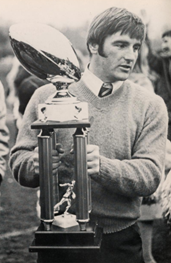 The success of the 1972 squad and the consistency of the program during the 1960s led them to advance a notch upward in the College Football hierarchy when they became a non-scholarship, program within the ranks of NCAA Division III (Division I being the highest) and they would encounter some victories in their first year (3-5) of 1973 including shutout wins over Rutgers-Newark (42-0) and Rochester Tech of New York (24-0). In 1974 7-2. Overall winning records would come in 1978 (5-4) and 1979 (4-4-1 with a forfeit in favor of Seton Hall). However, the rest of their time playing within the NCAA ranks led to consecutive losing seasons.
The success of the 1972 squad and the consistency of the program during the 1960s led them to advance a notch upward in the College Football hierarchy when they became a non-scholarship, program within the ranks of NCAA Division III (Division I being the highest) and they would encounter some victories in their first year (3-5) of 1973 including shutout wins over Rutgers-Newark (42-0) and Rochester Tech of New York (24-0). In 1974 7-2. Overall winning records would come in 1978 (5-4) and 1979 (4-4-1 with a forfeit in favor of Seton Hall). However, the rest of their time playing within the NCAA ranks led to consecutive losing seasons.

Although a high point in terms of venue came via playing select Saturday home and away games at Giants Stadium in the New Jersey Meadowlands from 1977 through 1981. In addition, Seton Hall played in the annual “Pride Bowl” of 1980 against Cheyney State although in a losing effort (0-26) a benefit contest of note for that time period. The final years included contests played against Catholic University of America, Hofstra, Pace, Montclair State, Coast Guard Academy, Rochester, Wagner, C.W. Post, Kings Point MMA, Kean, and others.

Despite being competitive and hopes of improved records, 1981 marked the last season of Seton Hall Football to date as the school discontinued the sport in 1982. Despite its absence, the legacy of the sport lives on in the heart and memories of Seton Hall alumni and local football fans in particular.
More information on College Football in general and particular can be found within the following Internet links along with many other sources that can be referenced upon request . . .
Original Rules of Football – https://www.espn.com/college-football/story/_/id/27356104/the-original-rules-college-football
Rules Update – https://www.profootballhof.com/football-history/history-of-football/1869-1939/1876-first-rules-for-american-football-are-written/
College Football – https://en.wikipedia.org/wiki/College_football
For more information regarding the History of Football and other Seton Hall Athletics History topics please feel free to contact Alan Delozier, University Archivist via e-mail at: Alan.Delozier@shu.edu or by phone at: (973) 275-2378.

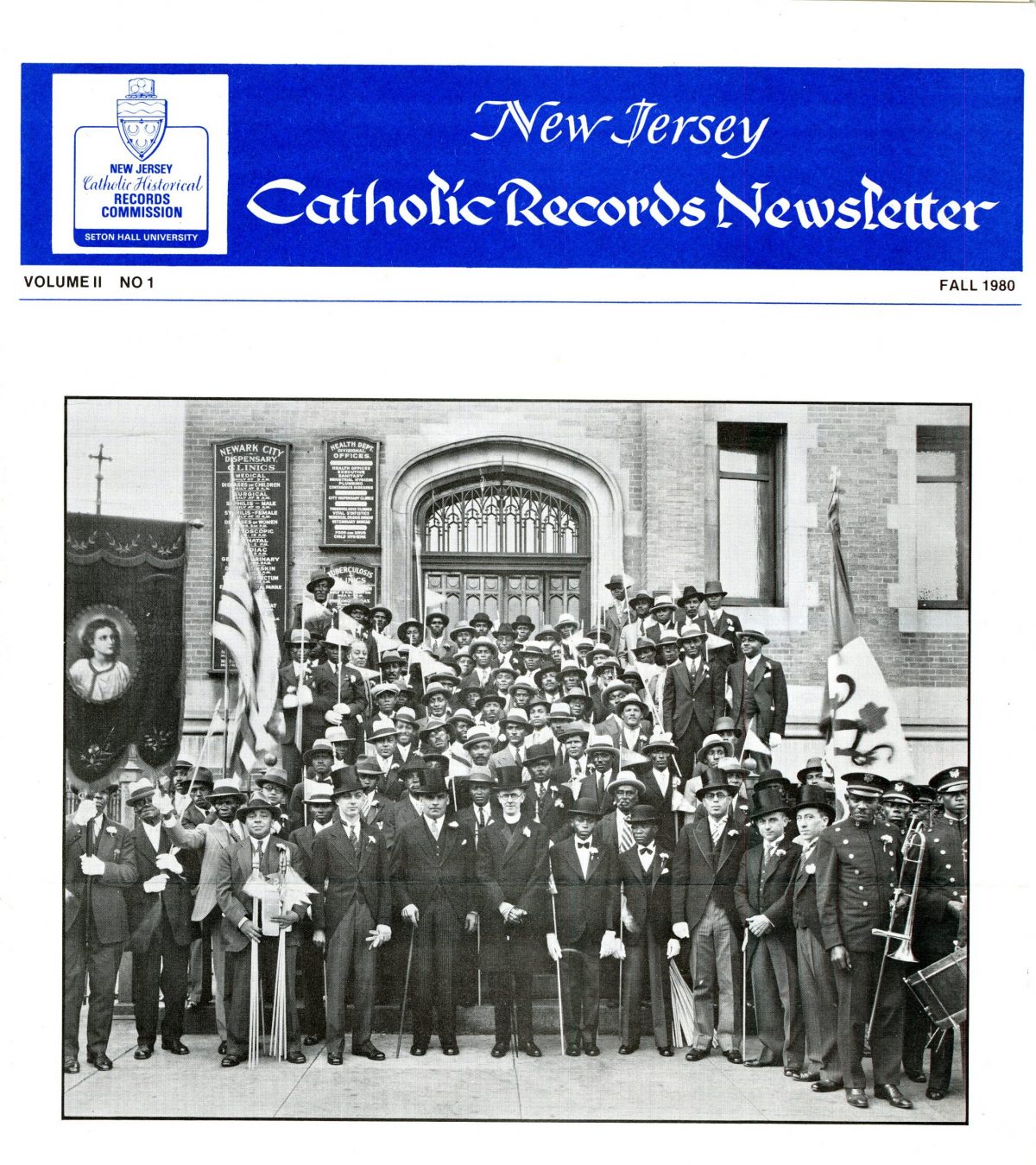
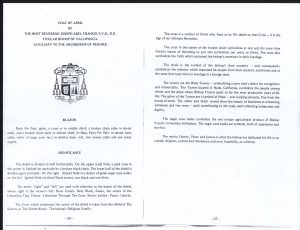

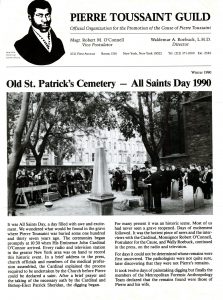

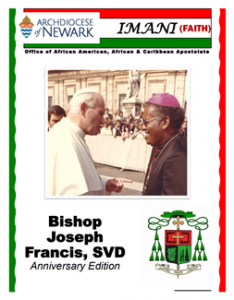

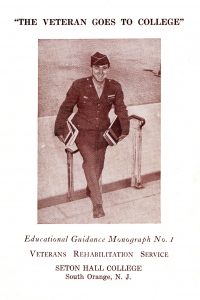
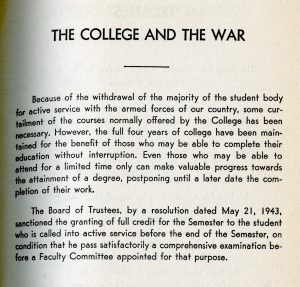
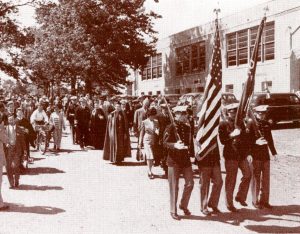
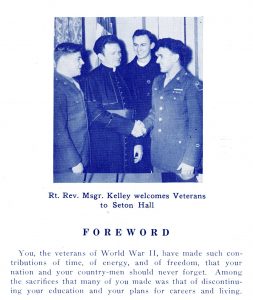
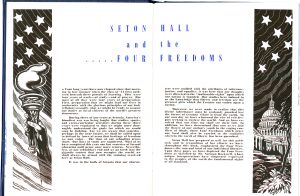
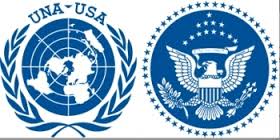
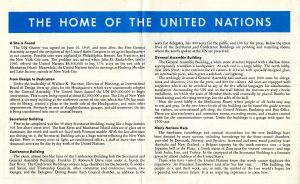
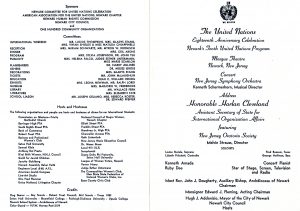


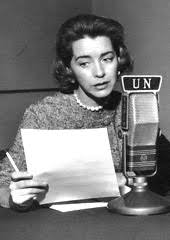

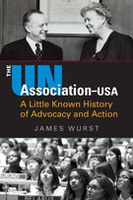

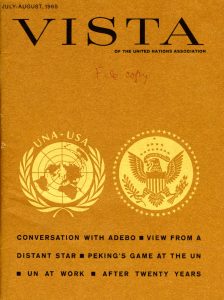
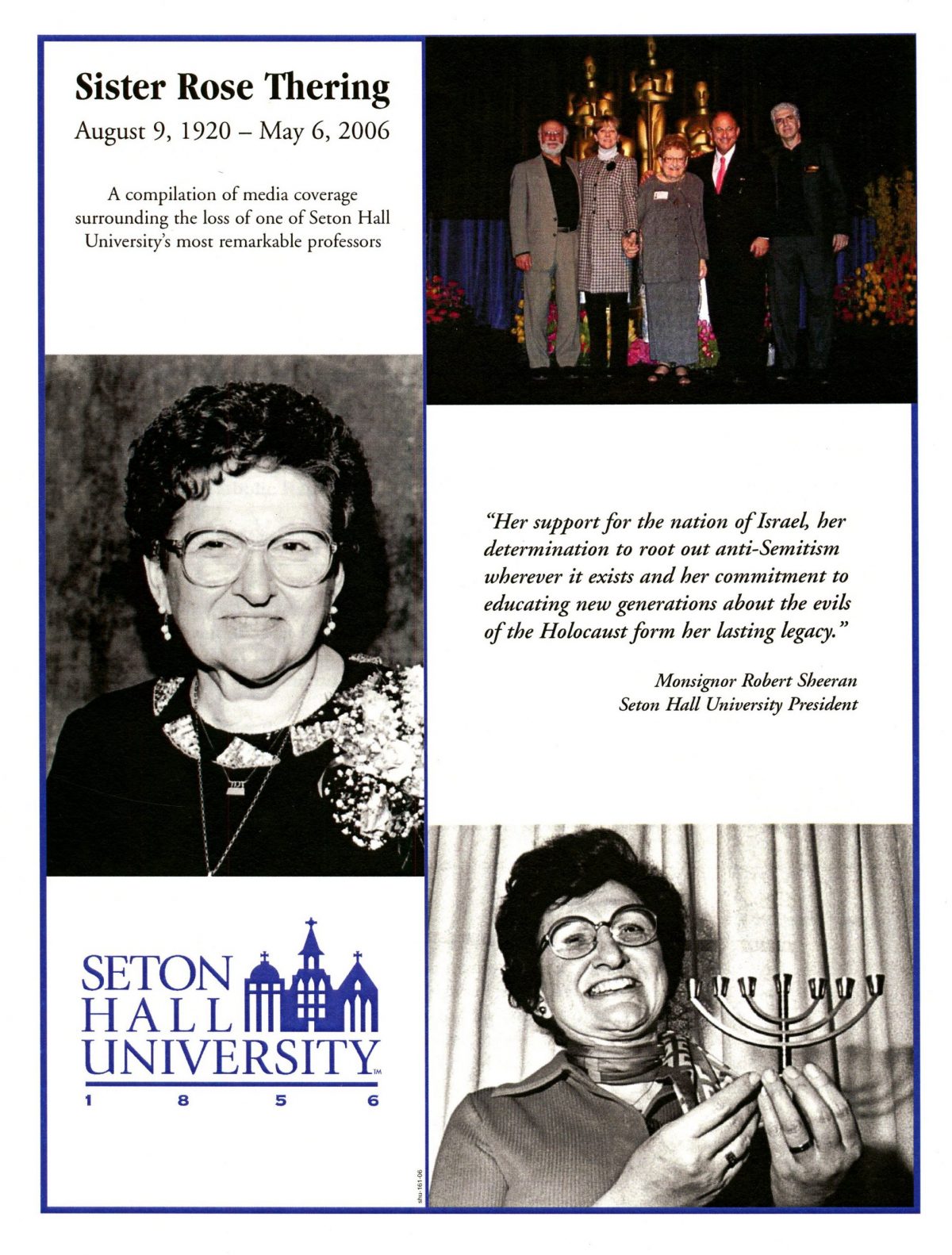
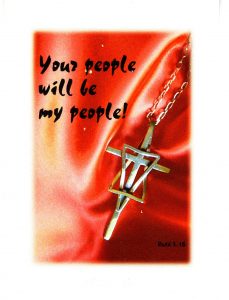
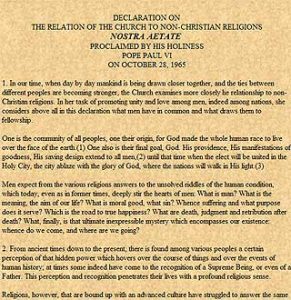
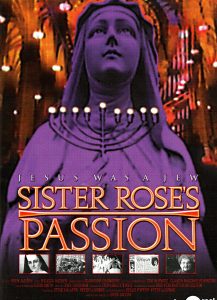
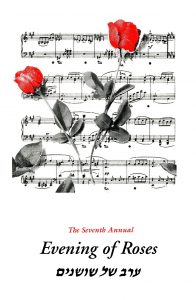

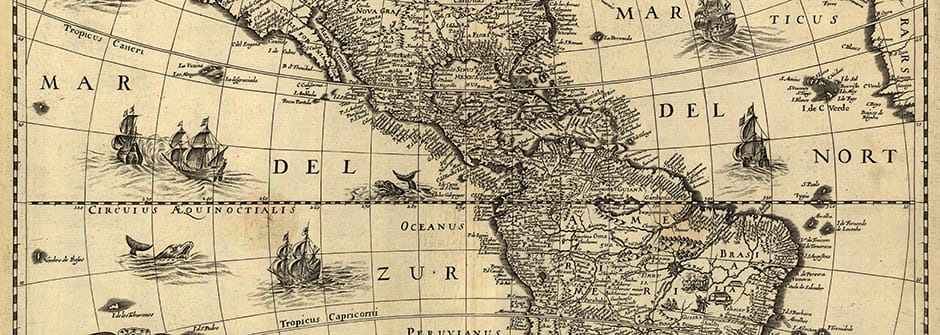
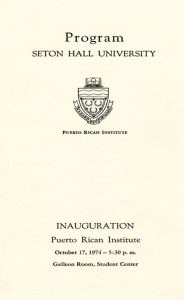
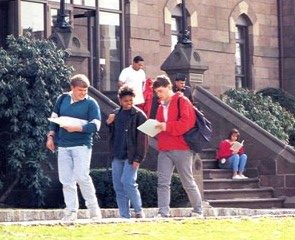


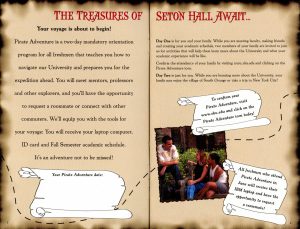


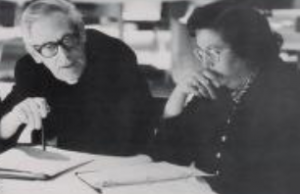

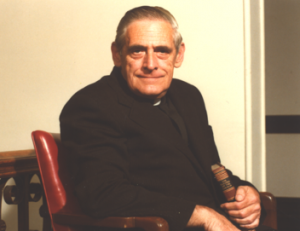 Additional postings regarding the life and legacy of Monsignor Fahy will be forthcoming. In the meantime, please feel to contact us if you need further information on Monsignor Fahy and all aspects of Seton Hall University. We can be reached via e-mail at:
Additional postings regarding the life and legacy of Monsignor Fahy will be forthcoming. In the meantime, please feel to contact us if you need further information on Monsignor Fahy and all aspects of Seton Hall University. We can be reached via e-mail at: 
